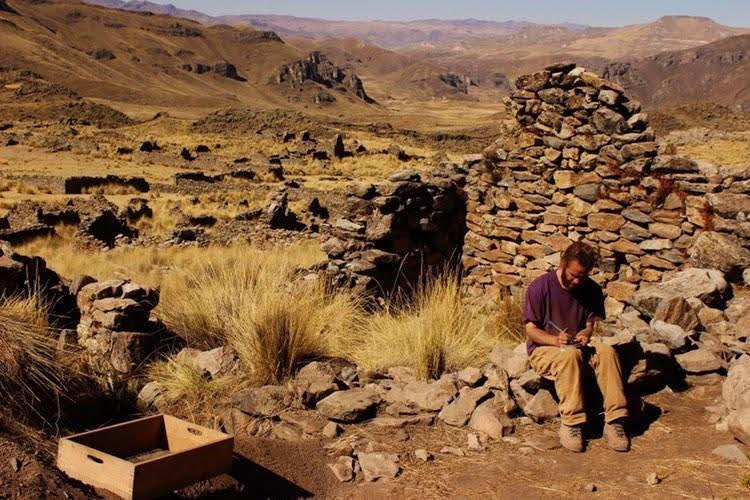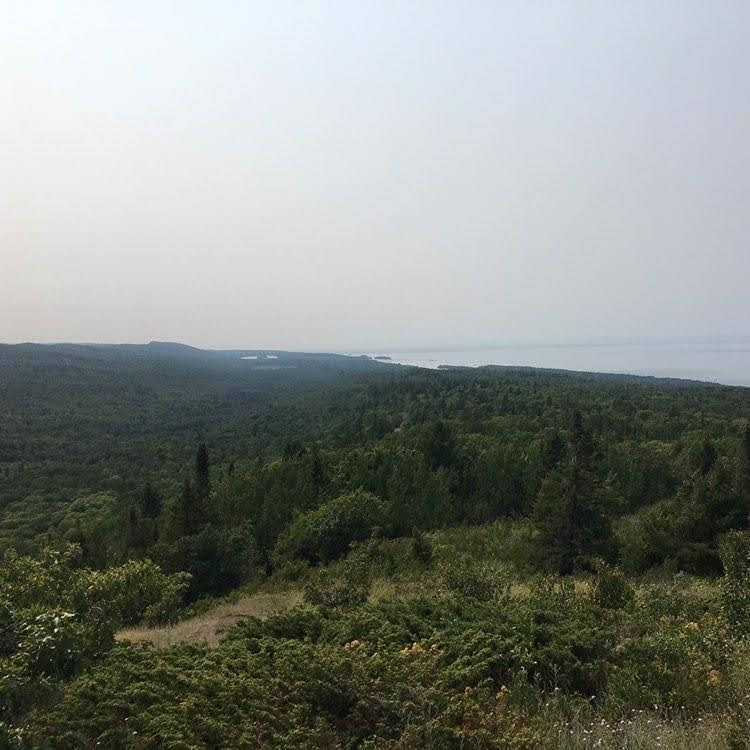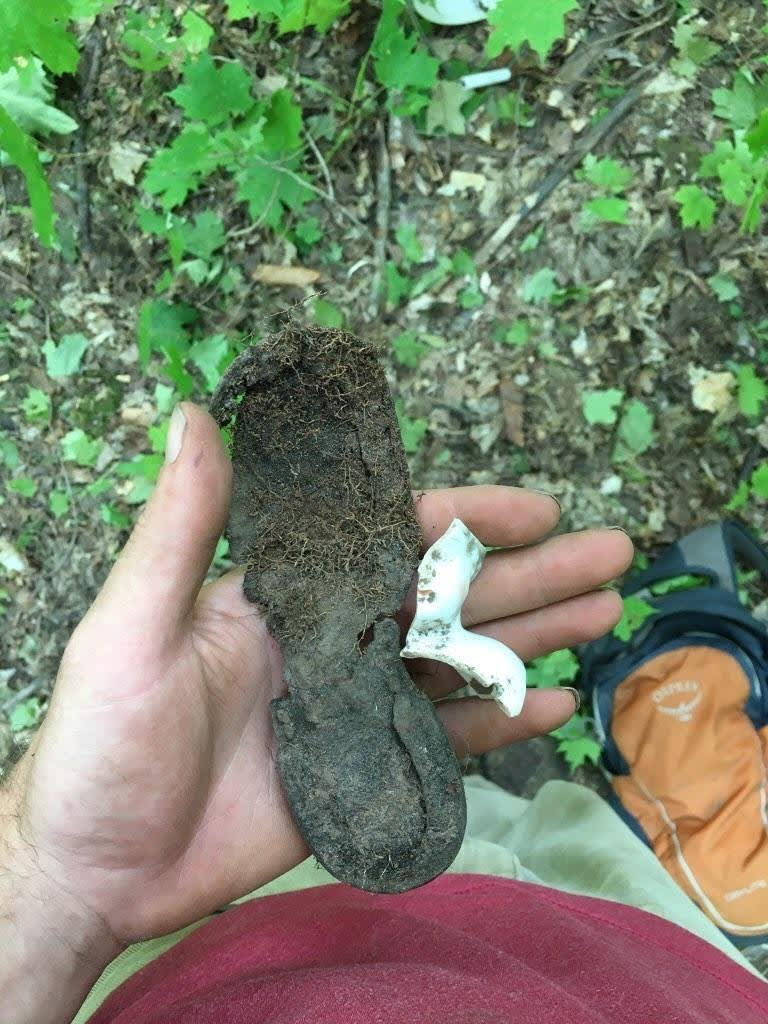P erhaps, like me, you’ve noticed a curious sort of temporality since the pandemic began. Time is passing both unbearably slowly and frighteningly quickly. The slow dragging days add up before they come to pass. History seems to outpace itself, leaving absences of memory in its wake. We’re moving into the future without the chance to catch our breaths, and without the time or frame of mind to organize our recollections and observations in the passing present into a coherent story that can bring us safely to a future worth living in at all.
In the nineties, there was much think-piecing and hand-wringing about the imminent end of history. Famously, historian Francis Fukiyama confidently proclaimed in 1992 that we had reached the end of history, with Western liberal democracy having shown itself globally ascendant and historically necessary with the fall of the Soviet Union. At that time, Western liberal democracy was a metanarrative that helped us to frame historical events in a cohesive and forward-looking framework.
Twenty years after September 11, 2001, the apparent decline of Western liberal democracy and its more recent spawn, neoliberalism, leave us wondering about the viability of such stories, as well as their perceived truth value: if liberal “progress” isn’t assured, as the last several decades seem to suggest, then what are we to do? What Big Story should we be telling?
Narratives are essential for my day job. I recently returned home to Birmingham, Alabama, after spending five weeks in a small tent outside the town of Munising in the piney woods of the Upper Peninsula of Michigan. I spent the summer working on an archaeology project excavating logging camps that were operated in the early twentieth century. On projects like that, studying the relatively recent past, you’re not really expecting to find buried treasure. Rather, it’s a lot of tobacco tins and nails and bits of broken glass and bottle caps. The point of the project was to identify how poor (mostly Scandinavian) immigrant loggers lived their daily lives by meticulously uncovering and analyzing their trash. What did they eat? What did they buy? Did they have time for leisure? That’s really all archaeology is: methodically digging up trash and learning about the people who left it behind. These workers make scant appearances in the historical record, so archaeology is well-suited for reconstructing their lives and trying to tell their stories the best we can.
As an archaeologist, I specialize in historical archaeology. Historical archaeologists study the period for which we also have a written record. Historical archaeology contrasts with prehistoric archaeology, which is the kind of archaeology most readers are probably familiar with. Historical archaeology offers one way to remedy a selective documentary record. What makes historical archaeology distinct from prehistoric archaeology is that we work between the archaeological record and the historical record. We try to fill in the gaps in the telling of history. The themes historical archaeologists treat, and the stories they incorporate, are often related to questions of colonialism, race, capitalism, environmental destruction, and the like.

The first step in filling those historical absences is to identify an absence in the first place. But where does one look for something that isn’t in the written record or in the stories we tell ourselves? To me, it seems that the best one can first do is trace the contours of the dominant narrative so as to determine what has already been said. This allows us to identify the limits of the historical absence.
After tracing the dominant narrative, we must determine which absences matter. Crucially, a Big Story can train one’s attention toward the gaps that do matter for that story’s unfolding. The dominant narrative is the history that has been recorded and remembered, and doesn’t necessarily cohere with any one Big Story. But without direction by a Big Story, how does one know where to look for the historical absences that matter for the direction of that story?
Big Stories—Western liberal democracy being just one example—situate events within the longer arc of history and its unfolding. The kinds of stories I’m calling Big Stories are those myths that generalize so as to account for the broad sweep of history and its ultimate direction. These stories are less concerned with the historical particulars than with how the particulars fit into a larger explanatory narrative. These are commonly known as metanarratives. Other competing contemporary examples of Big Stories are Christianity (and any other universalizing religion), Marxism, evolutionary biology (along with modern western science in general), and fascism. Without Big Stories, you just have scattered and unorganized bits of information, decontextualized data like broken glass. Big Stories help in our search for absences by highlighting themes that continue to matter in the contemporary world.
To draw from my own archaeological fieldwork experience, take for example the case of early Spanish colonial towns in Peru. In the southern Andes of Peru, I helped excavate an abandoned sixteenth century Spanish colonial town. The town was one of hundreds of reducciones. These were towns to which indigenous Andeans were resettled after Spanish conquest in 1532. All told, upwards of a million Andeans were forcibly relocated to these Spanish colonial townships because the Spanish believed it would make Catholic evangelization and colonial administration more efficient.
We spent ten weeks in a village of four hundred people, 14,000 feet above sea level in the high Andes. Sleeping on bunk beds in the village parish, without heat and with only sporadic running water, we hiked an hour each morning to the site. All this to dig up Inca and Spanish colonial potsherds and try to tell a particular story of sixteenth-century indigenous subjects living under colonial domination in Peru. Here, European colonialism is the Big Story of interest both because it shaped the modern world, and because it left colonized and exploited subjects largely absent in the historical record. Many scholars argue that European colonialism is one of, if not the, foundations to modernity. Another candidate for foundations to modernity is the development and growth of capitalism. In fact, it’s hard to disentangle colonialism and capitalism, and many point to early European colonial exploits in the fifteenth century as inaugurating capitalism as such. But I’m not so interested in the nuances of the origins of capitalism here. To the matter at hand, Marx’s critique of capitalism offers me a Big Story for approaching my current research in Birmingham, Alabama of all places.

What is unique to Birmingham (and to the entirety of the industrialing South) is the transition from racist chattel slavery to racist wage-labor in Alabama. In the abandoned iron mines of Birmingham’s Red Mountain Park, the Big Story of Marxism directs me toward issues of race and class that guide my research. I don’t mean to suggest that some kind of proof or justification of Marxism is specifically materially located in Birmingham, of all places. My point in this essay isn’t to argue the merits of Marxism, anyway. What I mean is that the Big Story of Marxism (as just one universalizing narrative) directs my attention to what matters for the story regardless of where that matter-ing takes place. The development of industrial capitalism as a mode of expropriating surplus labor, alienating workers, and creating surplus value (profit) for the bosses isn’t unique to Birmingham. The Big Story of Marxism simply allows me to focus on historical absences that pertain to that larger story. A Marxist mode of analysis can be applied to pretty much anywhere.
In my own case, in Birmingham, Red Mountain Park is home to abandoned iron mines that together comprised the foundation for the city’s rapid industrial growth in the late nineteenth century. Located between downtown Birmingham and the neighboring town of Bessemer, it incorporates the remains of the industrial infrastructure of the iron ore mines into its layout, with abandoned mine shafts visible from hiking trails. However, the park doesn’t highlight the mining camps themselves, where the workers lived, in its presentation of Birmingham’s industrial past. The mining camps in Red Mountain Park were majority-Black, and many of the workers had moved from agrarian plantation settings to work in the newly industrializing setting of Birmingham at the turn of the twentieth century. This story is one of the transition from chattel slavery to industrial wage-labor after emancipation, and it is the broad and sweeping narrative of Marxism that first directed my attention toward this question of labor history.
By chance, I came across the mining camp of Smythe, a majority-Black mining camp with almost no archival representation, a place that would help me address the questions posed by absences in the historical record and directed by my own commitment to Marxism as a Big Story.
One challenge in telling the stories needed to make sense of history is that social theorists (Foucault, Deleuze, Derrida) have spilled much ink arguing that all stories are formal constructs and, therefore, fictions. More recently, some writers like Yuval Noah Harari have popularized these ideas in even less-nuanced ways.
French poststructuralism came onto the scene in the second half of the twentieth century. Building on the arguments of earlier philosophers like Herder, Neitzsche, and Wittgenstein, the poststructuralists basically argued that, because our understandings of the world are grounded in our own historically-contingent and inherently values-laden language, there is no such thing as objectivity. All judgement, they claimed, entails certain self-referential assumptions that make a “realist” understanding of the world impossible. Foucault, for instance, argued in The History of Sexuality that the notion of an individual having a thing called a “sexuality” is itself a relatively recent historical development, one which would be alien to past civilizations. The poststructuralists thus highlighted a linguistic quirk that does not exist in English, but does in all the Romance languages: that “history” can refer to both a scholastic study of past events (l’histoire) and a subjective narrative (une histoire). The impact of this revelation was to suggest that l’histoire is actually just another of many competing histoires. The Big Story, they argued, is just that: a story.
We continue to see the influence of poststructuralism in contemporary cultural and political life in this country. This isn’t to suggest that an obscure group of French poststructuralists, in some way, caused our current predicament, but rather that the school of thought offers a descriptive and explanatory framework for thinking through our current disdain for truth. Think disinformation, or the total disintegration of verifiable narrative. The proliferation and pathological consumption of online information that’s been hyper condensed into images and bits of text only compounds the problem of finding a story that means something at all.
Surely you can relate with the feeling that we know everything and nothing at the same time. In light of the poststructuralist critique, and bearing in mind the fractious proliferation of online information, how do we continue telling stories? Even in historical archaeology, which is an empirical discipline, can we be sure we aren’t just writing another fiction? As we study the silenced stories of colonized indigenous people in Peru, or as we reconstruct the lives of miners in Alabama, are we not still selectively reading history? If we are writing fiction, is this a problem?
In his influential Silencing the Past: Power and the Production of History, the late Haitian anthropologist Michel-Rolph Trouillot identified a basic ambiguity in the vernacular use of the word “history.” He describes what he calls Historicity 1 and Historicity 2.
Historicity 1 describes the sociohistorical processes that actually happened out there in the world. On the other hand, Historicity 2 describes the stories we tell about what happened out there in the world. These two kinds of historicity are both distinct while also overlapping considerably.
Trouillot argues that to get at that ambiguity we ought to study the power-laden operations that produce silences in historical narratives. Ultimately, he is concerned with understanding how we might begin to redress historical erasures and write histories about people left out of dominant narratives.
Saidiya Hartman, a historian of U.S. slavery, addresses the problem of how to account for marginalized people (enslaved people, in her case) who leave no record of their own in the archives, and about whom next to nothing is written. For enslaved people, Hartman might at most have a name in a ledger documenting their sale as chattel. She pointedly says, “The necessity of trying to represent what we cannot, rather than leading to pessimism or despair, must be embraced as the impossibility that conditions our knowledge of the past and animates our desire for a liberated future.” So if a story is always going to be fiction, how does one go on telling stories, especially in the case of a story without any archival representation at all? In my own case, if Black industrial workers were erased from the Birmingham archive, how can I tell their stories anyway? Archaeology is one mode for probing historical absences, but are we not still telling a fiction, just a different fiction read against the dominant narrative?
My own dissertation research is concerned with Smythe, the aforementioned abandoned majority-Black iron ore mining camp in my hometown of Birmingham, Alabama. The site was occupied from roughly 1890–1915. The site was owned and operated by the Tennessee Coal, Iron and Railroad Company (TCI), which was incorporated by U.S. Steel in 1907.
Unsurprisingly, a corporation like U.S. Steel isn’t exactly interested in an anthropologist snooping through their records. Except for census records, I have had no luck in identifying any relevant documents in the Birmingham archives. Furthermore, any administrative documents related to Smythe were laid to rest in the U.S. Steel archives. I have emailed people in public relations several times and have been redirected and ignored each time.
This is a perfect, if not glaring, example of a gap in the archival record. Archaeology offers one option for recovering these lost memories.
Memory, of course, plays an important role in this problem of recovering stories that have been forgotten by history. In popular understanding, history is sometimes thought of like an individual’s memory. That is, history as collective or social memory. Trouillot takes aim at this framework, what he calls the storage model, and argues that history, and likewise individual memory, cannot be thought of as a cabinet with different compartments and their corresponding representations retrievable at will. Even were this the case, and all the representations were readily accessible, history isn’t a simple record of the sequence of the contents of each compartment. History requires an interpretive and narrative framework for organizing its contents.
Neither the individual’s memory nor collective memory is reliable as a representational accounting of what happened. An individual’s memory (and therefore identity) is malleable and unstable, and our collective recounting of history is always selective. Neither history (collective memory) nor individual memory is fixed, and the demands of the present always shape the contours of our recollections, both in narrating our selves and in narrating history.
Without a concept of a future worth living in, it’s hard to know what information in the present and its corresponding past bears recounting. That is, in the face of an absent future, we’re also left with an absent present and past.

Inundated with information, it seems difficult to zero in on what matters when we don’t have a Big Story. Stories, historical and personal, provide texture and organization to collective and individual memory. Stories push us to be attentive to the present and the past in terms of a future we look hopefully toward.
One reason that Big Stories matter is that they give us direction for recovering and retaining the information that matters for a future. They allow us to determine which gaps in memory matter for the sake of the story. We’ll never be able to recover all the information that has been lost to time and its distortions and erasures. But having a Big Story as a framework allows us to focus on what really matters.
Obviously, not everyone can put archaeological methods to work in filling historical gaps and other gaps in memory. Although archaeology offers an obvious toolkit for redressing historical erasure, it is by no means the only method of saying what heretofore has not been said.
Even if histories are fictional constructs, I argue that those constructs are still worth telling if we are to one day live in a future worth living in.
This question of history’s absences bears importance for living in the present as well. As gestured to above, without a Big Story directing us toward some imagined future, we are left with absences in the present and, as the present passes, absences in the past. The challenge we are left with is imagining a future we want to live in, and its corresponding story, in order to make us attentive to what matters in the present and past.
With multiple intersecting crises with apocalyptic overtones, it seems particularly urgent that we imagine a future worth living in. By hopefully identifying a direction to history’s unfolding, we can inhabit the density of history in the now, and productively weed through proliferating scattered information to identify what matters for the Big Story.
History is still being written. The question remains: What future will be written into existence?